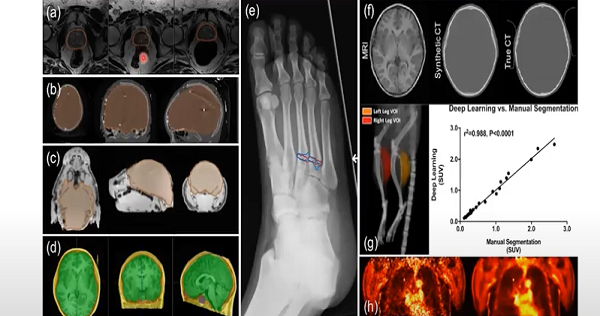
The raucous Branson, Missouri crowd fueled into a frenzy by Bloody Mary concoctions hushes in uniformity as Michael Buffer enters the venue. In the race to avoid extinction or disconnection, man versus machine is the main event in a paradox of a battle deciding a winner of an obscure corner of the Milky Way galaxy.
“It’s time for the ultimate alleyway brawl pitting biology against binary. Now… LET’S GET READY TO RUMBLE!” The audience/mosh pit achieves a crescendo of decibels, as the grudge match between flesh and circuits is only moments away from commencing.
Thanks to Biden, Covid-19, and a fugitive murderous ex-boyfriend on the loose in the Everglades, the most important news of the week was buried under a lava flow sensationalism and trending algorithms, as the FDA officially approved list of machine learning-enabled medical devices. The moves marks a significant demarcation as innovation matures from adolescence to adulthood, as previously human-influenced decisions in life and death scenarios can now involve the interface between smart software and applicable hardware. The notion that technology developed in the digital age, can transcend billions of years of evolution in possibly increasing the efficiency of current research and lab techniques crucial for accurate diagnosis of medical conditions, is as enthralling and horrific at the same time. As with the expectation of self-driving vehicles to match the nuance of the flesh and blood decision making tree, proponents of the game changing processes argue that computers capable of 10 billion processes per second is proportionally applicable to the expedient timetable of electronic Darwinism, whereas, decades of coding equates to the 3.2 million years since Lucy perished on the savannahs in Africa.
The most notable beneficiary of the FDA’s seminal policy is a series of diagnostic tools which assists doctors and researchers in evaluating biological samples to identify mutated cells and the presence of prostate cancer. Currently, the process of accurate diagnosis using a microscope and deduction is a rigorous process demanding excellent proficiency, and the medical community is hoping that the tool can bring an added layer of redundancy in decreasing errors. Branded as a valuable tool for pathologists, a study showed that Paige Prostate raised accuracy by over 8% than contemporary methods of detecting cancer. While the project represents a collaboration between humankind and a computer that is a necessary part of modern medicine, the precedent has now been set for eventually eliminating the living being from the equation in gravitating towards full-blown automation. The bottom line is as important to the hospitals and clinics, as to the lucrative tech realm attempting to dominate the near future. However, there is no wiggle room for a world where the physician-patient dynamic is utterly phased out, and replaced by AI escorted around a hospital by a med tech.
From driverless highways to workerless corner convenience stores and autonomous drones, the latest offerings of high tech are no doubt exciting, however with more moving parts and complex infrastructures, an entirely new set of failures is possible that have not even been thought of yet. That is the conundrum of overengineering, as there is no “on” and “off” switch. As Moore’s law comes into focus and engineers and technicians become the minions to the machine master, one has to ponder if a sole supercomputer housed in a rusting warehouse is already making the key decisions defining the future shock of modernity.
In this this era of fake news, fiction, especially science fiction is more aligned with fact, than content generated by what are construed to be objective journalists. There is probably an AI app for the blatant bias afflicting the newsroom.